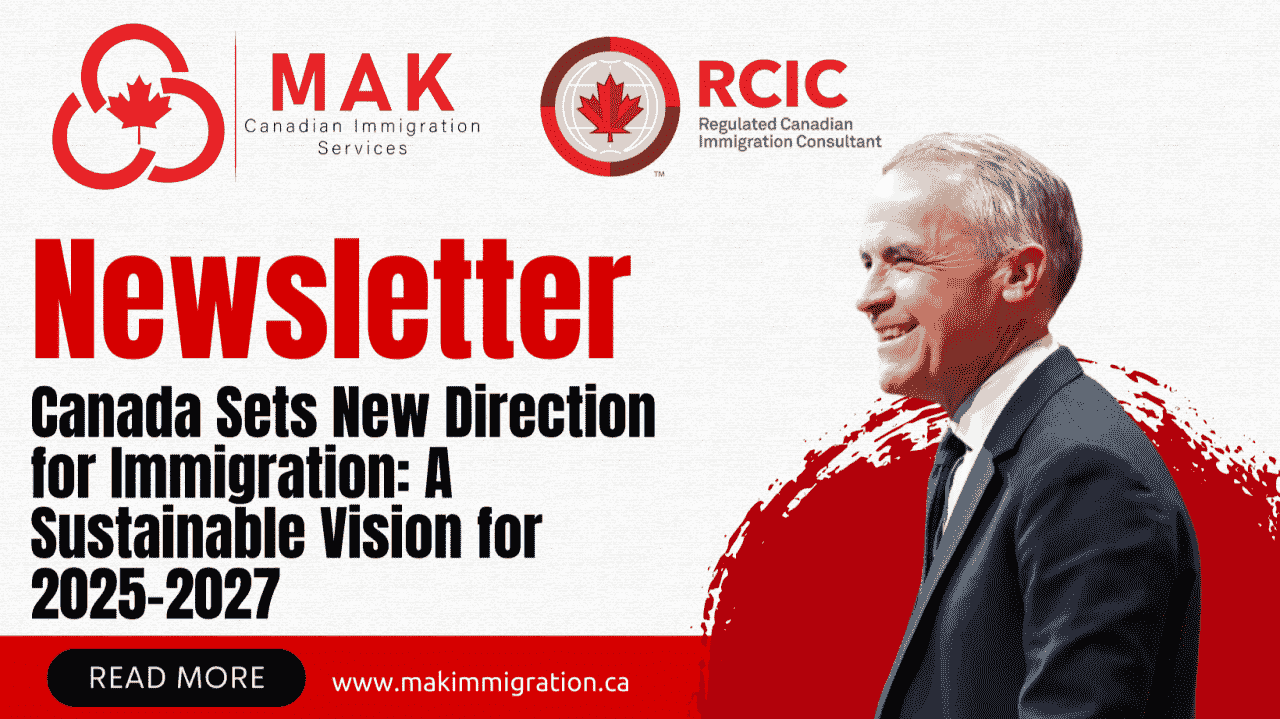Canada is starting a new phase in its immigration policy. The goal is to find a beneficial mix between welcoming newcomers and making sure the country will be successful in the long run. This change is reflected in the new Immigration Levels Plan for 2025–2027, which is not just about numbers but also about integration, sustainability, and helping communities and the economy.
Looking Ahead with Purpose
Canada makes a multi-year plan every year that spells out its immigrant goals. Starting in 2025, the government is not only making plans for permanent residents but also, for the first time, for temporary residents like international students and foreign workers. This broader view helps Canada handle growth while emphasizing its ability to help newcomers in the best way possible.
Shifting Focus: Quality Over Quantity
The plan outlines a reduction in the number of regular residents starting in 2025. It may look like a step back, but the goal is to slow down rapid growth and make it easier for newcomers to fit in by making it easier for them to find homes, medical care, and jobs.
By 2025, more than 40% of people who are given permanent residency will already be living in Canada as temporary residents. These people, who are usually skilled workers or foreign students, have already started to get used to life in Canada, which puts them in a good position for long-term success. This method also eases the load on public services and boosts the economy with skilled workers.
Prioritizing Canada’s Needs
By 2027, economic immigration lines, especially those that focus on healthcare, skilled trades, and technology, will bring in almost two-thirds of all permanent residents. Important gaps in the workforce will need to be filled by programs like the Canadian Experience Class and regional efforts.
At the same time, Canada is still very dedicated to helping families get back together and people in need. Sponsored family members will make up about a quarter of the new permanent residents in 2025. The government will also continue to protect vulnerable groups like refugees, religious minorities, and people who are fleeing oppression.
Supporting Francophone Communities
One important goal of the plan is to bring more French-speaking newcomers from outside of Quebec. By 2027, 10% of all permanent residents will be Francophone. The initiative is meant to help French-speaking towns across the country stay alive and grow their economies.
Rebalancing Temporary Residency
Permanent residents, especially international students and foreign workers, have been an important part of Canada’s immigration system for a long time. The government wants to keep population growth sustainable, so by the end of 2026, they want to make sure that temporary people don’t make up more than 5% of the total population.
We are making the following adjustments to help us achieve this goal:
- The number of foreign student permits has been capped, and more cuts are planned for 2025.
- The Post-Graduation Work Permit Program needs to be changed to meet the needs of the real job market.
- Employers who hire low-wage contract workers should have to follow stricter rules.
- Some temporary residents have limits on the work permits available for their spouses.
- These steps aim to better handle short-term population flows and ensure that the system helps the people who are most likely to meet Canada’s long-term needs.
Addressing Asylum and Humanitarian Challenges
People who are running away from war or abuse can still find safety in Canada. Recent reforms include visa modifications for specific countries and enhanced resources for immigration officials to combat fraud, all guided by principles of fairness and compassion in decision-making. Despite being significant, the overall impact of the new immigration policy will be gradual. Since more people are leaving their homes around the world, the country is improving its asylum system to better handle the rising number of claims. New changes include changes to visas for some countries and better tools for immigration officers to stop scams while still making decisions fairly and compassionately.
What This Means for Canada
The new immigration plan will have a big effect on people over time, but it will happen slowly. In 2025 and 2026, population growth will slow down a bit, but by 2027, it should pick up again. In turn, this approach will help close the housing gap by making about 670,000 homes available. It will also help the economy grow, make housing more affordable, and lower unemployment rates.
Careful, forward-looking planning helps the nation to provide a basis for shared wealth in the years to come. Canada’s new immigration policy shows that the country is taking a mature, forward-looking approach that values both newcomers and the communities that welcome them. Plan carefully and with a long-term view, and the country will be rich in the years to come.

